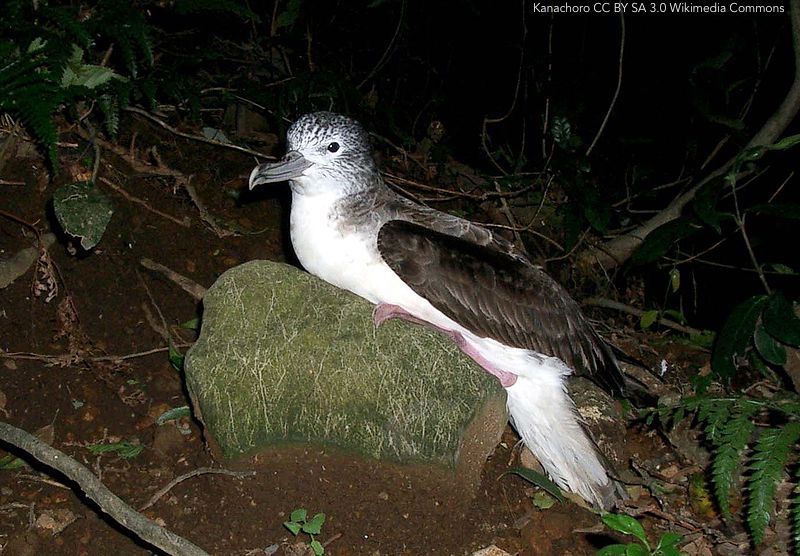
A Streaked Shearwater at its breeding site
Sarara Azumi (Graduate School of Fisheries Science, Hokkaido University, Japan) and colleagues have published open access in the journal Mammal Research on feral cat predation of Near Threatened Streaked Shearwaters or Oomizunagidori Calonectris leucomelas on Japan’s Mikura Island.
The paper’s abstract follows:
“Understanding how invasive predators impact native species is essential for the development of effective control strategies, especially in insular environments where alternative non-native prey species exist. We examined seasonal and spatial shifts in diet of feral cat Felis silvestris catus focusing on the predation on native streaked shearwaters, Calonectris leucomelas, and introduced rats, Rattus rattus and R. norvegicus, which are alternative prey to shearwaters, on Mikura Island, Japan. Streaked shearwaters breed at low elevations on the island from spring to autumn, whereas rats inhabit the island throughout the year, which makes them an alternative prey when native shearwaters are absent. Fecal analysis revealed that feral cats dramatically shifted their diets from introduced rats in winter to streaked shearwaters in seabird-season in low elevation areas of the island, while cats preyed on rats throughout the year at high altitudes on the island. This finding suggests that feral cats selectively prey on shearwaters. This is probably because of their large body size and less cautious behavior, and because introduced rats sustain the cat population when shearwaters are absent. The number of streaked shearwaters killed was estimated to be 313 individuals per cat per year, which represents an indication of top-down effects of feral cats on streaked shearwaters. Further studies on the demographic parameters and interspecific interactions of the three species are required to enable effective cat management for the conservation of streaked shearwaters on this island.”
Reference:
Azumi, S., Watari, Y., Oka, N. & Miyashita, T. 2020. Seasonal and spatial shifts in feral cat predation on native seabirds vs. non-native rats on Mikura Island, Japan. Mammal Research doi.org/10.1007/s13364-020-00544-5.
John Cooper, ACAP Introduction Officer, 15 December 2020

 English
English  Français
Français  Español
Español